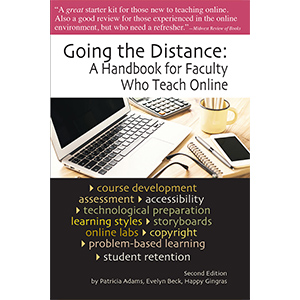Tips for Increasing Student Engagement in Online Courses

by Barry Dahl
Most educators will agree that student engagement is paramount for a high quality learning experience. Not everyone agrees on what is meant by student engagement or how to achieve it. One definition of student engagement is “the amount, type, and intensity of investment students make in their educational experiences.”
Here are a few ideas for increasing and ensuring higher levels of student engagement in online courses:
1. Communicate in multiple formats
Online education provides instructors with multiple avenues for communicating with students. Course email and discussion forums tend to be the standard communication tools, but don’t overlook embedded audio and video, chat rooms or instant messaging, broadcast text messaging, and home page announcements. Explanatory screencast videos tend to be well received by students, and are increasingly easy and inexpensive to create.
2. Provide active learning opportunities
A common misconception about online learning is that students only sit in front of their computers. That might be true if the course is designed that way, but one way to engage online learners is to get them out of their chairs (or beds) and get them involved in active learning. One definition of active learning is “hands-on learning,” although that could probably include “hands-on your mouse,” which is not the suggestion here. Assign your online students to interview people working in the field, or to otherwise bring their learning out into the community where they live. Case studies, group projects, or gathering and analyzing local data are just a few of the many examples of active learning.
3. Make Learning Social
Many instructors are looking at social media as ways to spice up their courses and engage students in topical learning. Consider adding a Twitter badge to your course homepage and then using a hashtag to push posts with course-relevant content to your students. Social platforms, if used effectively, can help build a sense of classroom community among the students and between students and instructor.
4. Gamify with Badges and Certificates
There are many ways that you can add gamification elements to online courses, without going the route of building a full game-based learning course from start to finish (which has been accomplished by a few ambitious educators). As a more intermediate step, consider adding badges to your course for recognizing student accomplishments along the way. Badges that are rewarded on the basis of achieving particular competencies can be offered as a way of rewarding student performance and encouraging continued engagement.
5. Provide timely and useful feedback
Feedback to students about their performance is extremely important in the effort to keep students engaged in the learning journey. Quick responses to discussion posts and email questions can help keep students on track for the next assignment or activity. Turnaround time on grading of assessments can also have an impact on future student efforts. Students should never have to engage in the next assessment without receiving feedback on the previous assessment. Feedback that is detailed and positive in nature tends to be more effective than faint praise or unclear messages.
6. Add self-assessment opportunities
Provide opportunities for self-assessment, allowing students to take more responsibility for their own learning. Grading their own discussion posts, or providing input for their own grade for course participation can be a motivating and sometimes humbling experience. A course-based ePortfolio or learning plan can be used to encourage students to build their own personal learning plans while identifying their preferences for multiple assessment methods.
7. Improve course accessibility for all
This last category is not one that is commonly thought about when talking about the importance of student engagement. However, student engagement can be reduced for all when course content is provided in a way that causes problems with web accessibility. Regardless of whether a student relies on assistive technology or not, having course materials that don’t create barriers to learning is an ongoing need for students in online education. Taking minor steps toward accessibility improvement of course materials is a good practice for educators to engage in on a frequent, periodic basis.
First posted to D2L.com







